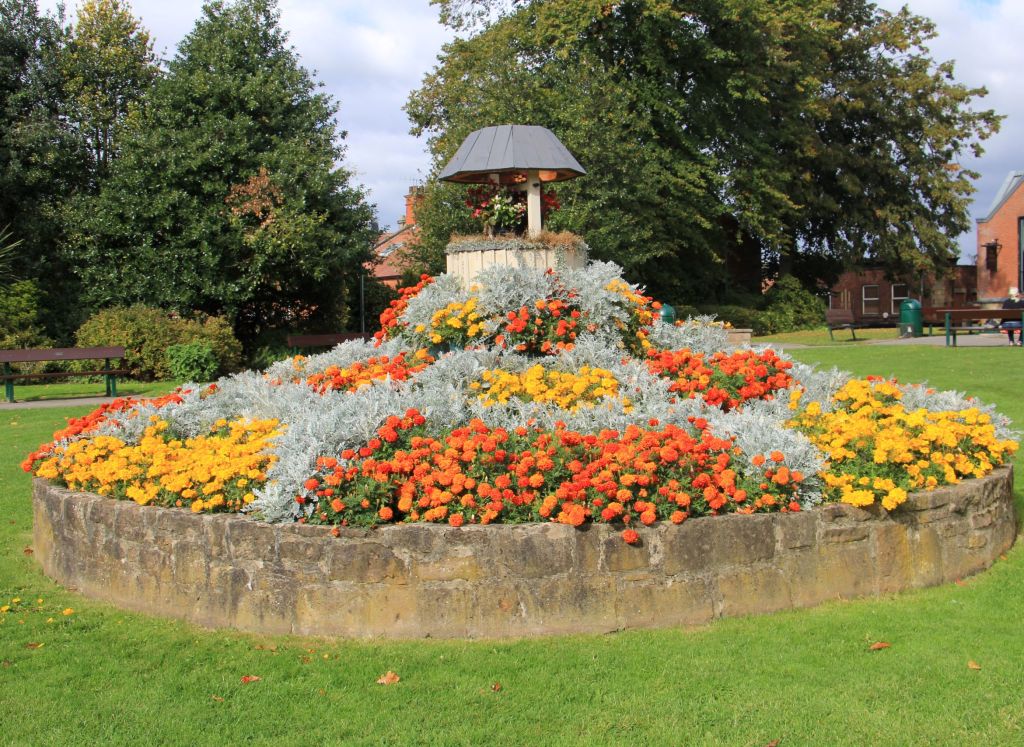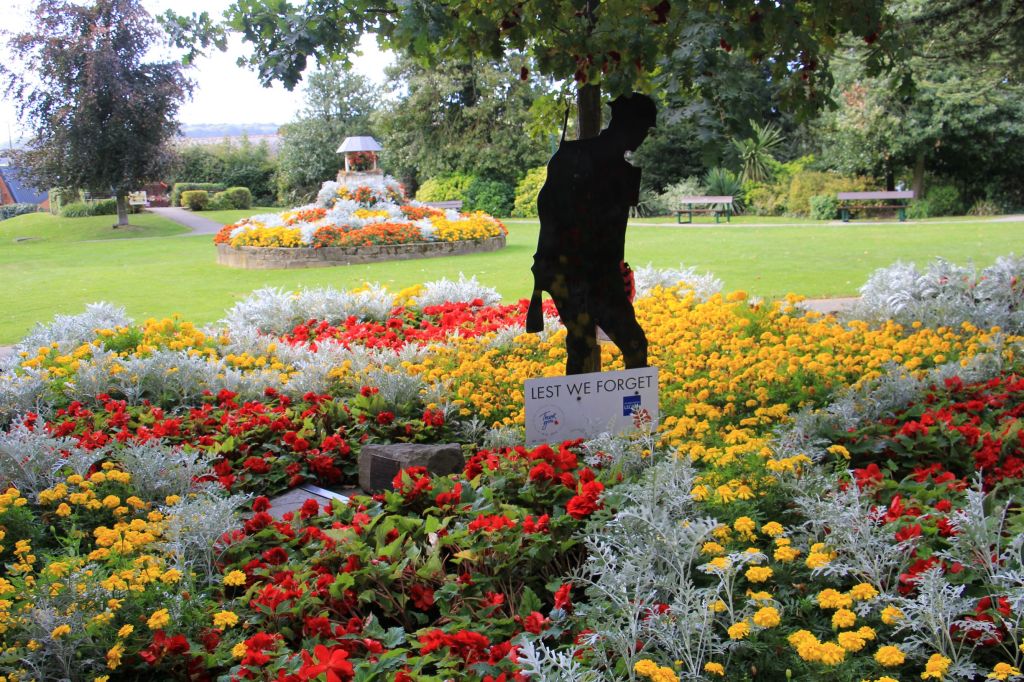Today, 11 November, is Armistice Day, when Britain remembers its fallen servicemen and women. Armistice Day was first observed in 1919 to commemorate the armistice agreement that came into effect on Monday, November 11 1918 – at precisely 11am – to formally end the First World War. To mark this anniversary a two-minute silence is observed each year at the eleventh hour of the eleventh day of the eleventh month.
In addition, services and ceremonies to remember those who lost their lives fighting for their country in all conflicts – not just the First World War – are held annually on Remembrance Sunday, which always falls on the second Sunday in November. In 2020 Remembrance Sunday was therefore on November 8, but events were scaled back drastically due to the Covid-19 crisis.
* * *

The First World War resulted in around 886,000 deaths of British military personnel. Unsurprisingly, society felt an urgent need to commemorate those who had lost their lives, and up and down the country war memorials were created as the focus for community remembrance. Memorials took many forms, including in some places a dedicated garden.
Although I’ve lived in Belper since 1983 I’m sorry to say that until a few weeks ago I had never visited its Memorial Garden. The Garden dates from 1921 and lies on land donated by George Herbert Strutt, a descendant of one the town’s most famous sons, cotton mill magnate Jedediah Strutt.

The names of the dead servicemen are inscribed on a simple white granite obelisk, around 4.5 metres high, standing close to the northern boundary of the Garden. There are 225 names in total, including one W [Walter] Pepper.
When viewing war memorials it can be difficult to get beyond the list of names, and to understand something of the lives they represent. But in Walter’s case there are tantalising insights on the web.
The Belper in Wartime website tells us that Walter Pepper was born and lived much of his life within just a few hundred metres of the parcel of land which was to become the Memorial Garden. He worked as a fitter before the war, and later joined the 1st/5th Sherwood Foresters (Notts and Derby Regiment).

Walter was killed in action on the first day of the Battle of the Somme, on Saturday 1st July 1916. He was 38 years old. The night before he “went over the top” to his death, Walter wrote this moving letter to his wife:
“Dearest,
Source: Belper in Wartime website
I could not rest without saying goodbye, happen for the last time…but I want you to cheer up and be brave for the children’s sake. We must put our trust in God and hope for the best – to come safely through. We go over in the morning and I am in the first line. They are giving them a terrific bombardment… It is simply hell upon earth here.
My last thoughts will be with you at home as we are stepping over the trenches. May God watch over me and guard me and bring me safely through.”
* * *
Although the obelisk is the primary focus for ceremonies of remembrance, the whole Garden is dedicated to the fallen. Belper town has something of a reputation for its floral displays, and the Memorial Garden was a riot of colour when we visited in September.

The Garden’s generous scattering of benches gives visitors the chance to sit and rest awhile. Here, in this tranquil oasis, it’s easy to escape the hurly-burly of our busy little town, to contemplate and to reflect on the sacrifices others have made so that we may enjoy our comfortable lives today.
One of the Garden’s simple but striking features is the silhouette of an infantry soldier amongst the flowerbeds. Propped against his legs is a plaque bearing the legend “lest we forget.” It’s a poignant reminder of why this is place is here.

And towering over the south-western corner of the Garden is another reminder. Sacrifice depicts the face of Lance Corporal Jim Green, another Belper man who joined the Sherwood Foresters regiment and then perished on the first morning of the battle of the Somme.
Before joining the Army Jim Green worked as a coal hewer at nearby Denby Colliery, and was a popular soccer player. He lived in the Cow Hill area of Belper, within sight of the sculptural installation which now immortalises him. Green’s image is copied from an archive photograph, in which he poses proudly in his uniform tunic and cap.

Sacrifice was designed by local artist Andy Mayers, and is cunningly fashioned from 29 rods of corten steel. As you walk around it the view of the subject’s face is forever changing. From some angles you can almost forget you are looking at a face at all, but from other positions it’s unmistakeably a soldier in uniform. To me the symbolism of this installation is plain: the fallen are forever with us, even though we do not always see them clearly.
* * *
Belper’s Memorial Garden has one more surprise in store, a poem inscribed on a plaque discretely tucked away on one of the boundary walls. One of 20 poems that make up Beth’s Poetry Trail, High Flight was written by John Gillespie Magee, an Anglo-American aviator and poet who served in the Royal Canadian Air Force. He died in a mid-air collision over Lincolnshire in 1941.
Oh! I have slipped the surly bonds of Earth And danced the skies on laughter-silvered wings; Sunward I’ve climbed, and joined the tumbling mirth Of sun-split clouds, – and done a hundred things You have not dreamed of – wheeled and soared and swung High in the sunlit silence. Hov’ring there, I’ve chased the shouting wind along, and flung My eager craft through footless halls of air… Up, up the long, delirious burning blue I’ve topped the wind-swept heights with easy grace Where never lark, or ever eagle flew – And, while with silent, lifting mind I’ve trod The high untrespassed sanctity of space, Put out my hand, and touched the face of God.
Magee has no obvious connection with Belper, and yet his words clearly belong here. He, like the other men whose names are recorded in the Belper Memorial Garden, gave his life in the service of his country, and in so doing touched the face of God.
What a beautiful post. We must all remember.
LikeLiked by 1 person
Thank you, Gary. As ever, I appreciate your feedback and encouragement. Best wishes to you.
LikeLiked by 1 person
Very moving post, especially that last letter of Walter Pepper. And what a lovely garden!
The Magee poem is a well known and well loved one. But I feel touching the face of God is more to do with being in the pure air, above the troubles of the mundane world, and less to do with service to one’s country.
LikeLiked by 1 person
Thank you, I was surprised how moving it was to write, particularly when I (unexpectedly) came across Walter’s letter.
I certainly to see what you mean about Touching the Face of God, and I’m sure that is what Magee intended when he wrote it. But given the manner of his death and the context in which the poem is mounted in the Memorial Garden, I perceive an alternative interpretation, that those who die in the honest belief that they are nobly serving their country may – metaphorically – touch the face of God at the moment of their passing, as their spirit/soul moves on to another plane of existence.
I’m perhaps being a bit mischievous in my interpretation – not least because “God” in any form does not feature within my own belief system! – but isn’t that the joy of good poetry, that it’s open to endless reinterpretation? A poet creates a work and sets it free, like a captive bird released from a cage, not knowing or being able to control where it flies, or how it will behave and be perceived by the wider world. Does that make any sense, and justify my misappropriation of Magee’s words in pursuit of a pseudo-mystical conclusion to my post? Probably not, but thank you for waking my brain from its post-lunch torpor! Best wishes to you.
LikeLike
Absolutely, Platypus Man! We each see and read through our own lens of nature, upbringing, experience, previous reading, etc. It’s a glorious free-for-all! As for me, I’m always looking at things with an editorial eye, which is rather a bad thing and should be suspended as far as possible.
LikeLiked by 1 person
Absolutely, Platypus Man! We each see things through our own lens of nature, nurture, experience, previous reading, etc. It’s a glorious free-for-all! As for me, I have a bad habit of looking at everything with an editorial eye 🧐. Apologies!
LikeLiked by 1 person
No apology needed. Healthy challenge is a good thing, helping to keep my brain sharp and my writing grounded. Even though our perspectives on Magee’s poem differ, the important thing is that here we are – two people who live on separate continents and will never meet – having a thoughtful debate about poetry, life and random areas of metaphysics. Beats the hell out of worrying about Covid and the US election! 🙂
LikeLike
Yes, it’s a wonderful thing when you look at it like that! I was feeling ashamed of my argumentativeness, but now I see the discussion in its true light. Thank you!
LikeLiked by 1 person